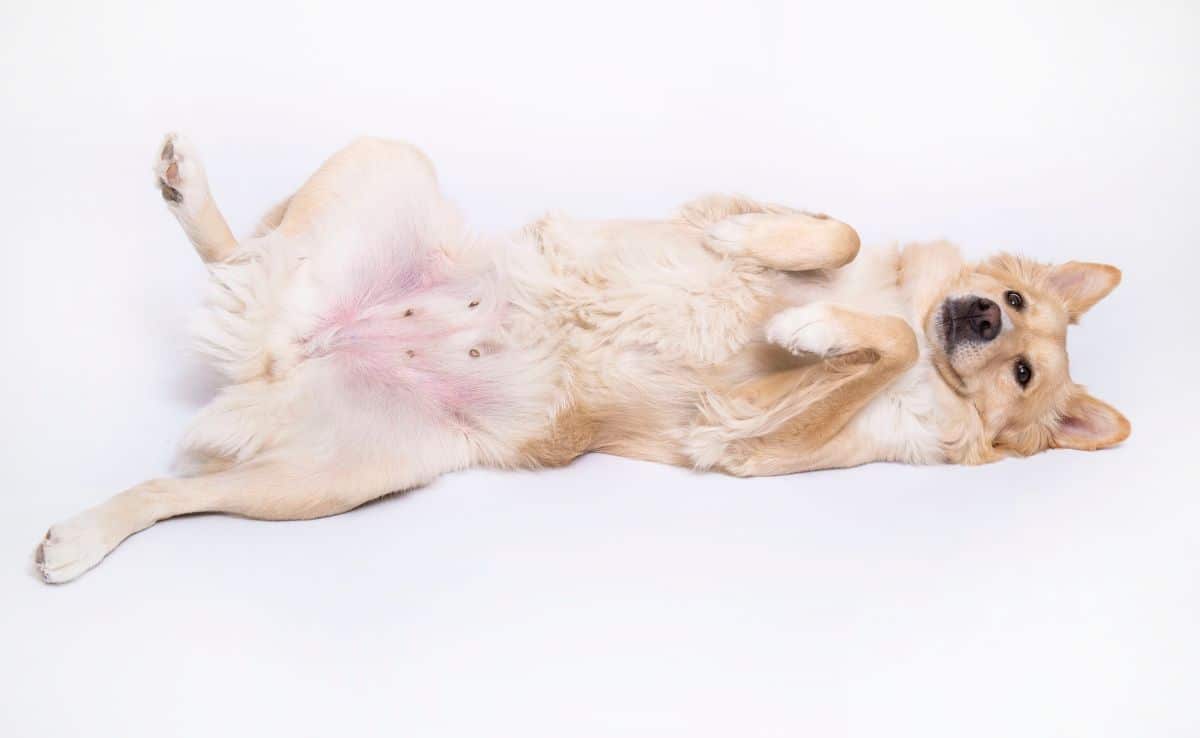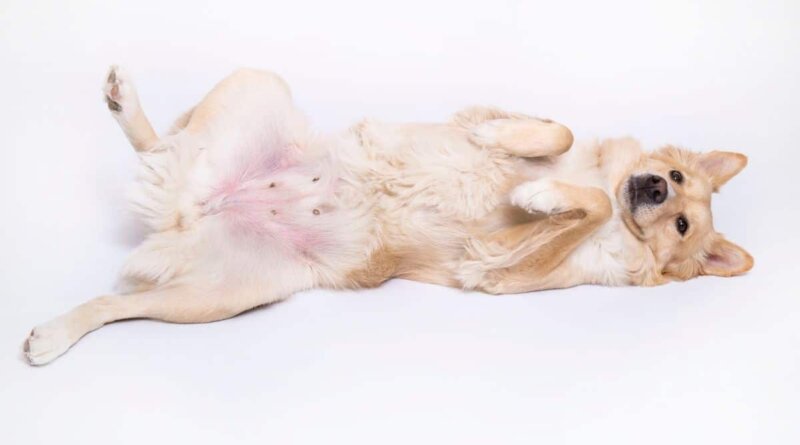How Many Nipples Do Dogs Have?
To keep the lights on, we receive affiliate commissions via some of our links. Our review process.

Of all the random things you can wonder about your canine companion, have you ever been curious about how many nipples dogs are supposed to have? And do male dogs have nipples? (The same number as females?) Veterinarians actually get these questions fairly often, so you’re not alone if you’re wondering if your pup is normal. Learn everything you ever wanted to know and more about dog nipples.
How Many Nipples Does A Dog Have?
Most male and female dogs typically have 8 to 10 nipples, also called teats, but this number can vary depending on a dog’s breed and size. Some small dogs only have 6, while large dogs can have up to 12 nipples. While the number of nipples generally reflects the average size litter for the breed, within each breed, size, or gender, there’s no set number. So, for example, one Labrador Retriever could have 8 nipples, while another Lab of the same size could have 10.
What Do Dog Nipples Look Like?
Nipples look similar in both male and female dogs unless a female is in heat or nursing, in which case they swell. Nipples appear as small bumps that resemble pimples or bug bites. They can be the same color as your dog’s skin or pigmented from pink to black. It’s relatively easy to confuse a nipple for a tick on your pup’s belly, so be sure you have a tick on your hands before trying to pull it out.
Are dog nipples always symmetrical, meaning they have the same number on each side? Most dogs have symmetrical nipples, but sometimes they can have an odd number of nipples. If your pup has an odd number, there’s no reason to worry. It doesn’t indicate a medical problem at all.
Fun Fact: Unlike kittens and piglets who stake a claim on their preferred nipple when nursing, research found that puppies don’t show a preference or compete with their littermates for a nipple of choice. Instead, puppies latch onto many different nipples while nursing.
Do All Female Dogs Have Nipples?
Yes, all female dogs have nipples. But with some pups, they’re hard to see, so you may worry that your dog doesn’t have them. Spayed dogs tend to have flat or even slightly inverted nipples. And since they can be the same color as your dog’s skin, they can be easy to miss. They’re also harder to see through long fur or thick coats.
Why Do Male Dogs Have Nipples?
The reason male dogs (and humans and other mammals) have nipples boils down to basic biology. During the first several weeks in utero, male and female embryos develop identically. This developmental phase includes the formation of nipples. It’s not until about six or seven weeks in gestation that genes “turn on” to form differing sex organs.
Scientists believe that evolution hasn’t eliminated the development of nipples in males because they pose no negative effects on the body. Male nipples are one of several vestigial body parts, like the appendix, that serve no purpose.
Why Are My Dog’s Nipples Swollen?
There are several reasons dogs’ nipples swell other than when they’re pregnant or nursing.
- Intact (non-spayed) females typically experience some nipple swelling while they’re in heat.
- More severe swelling in lactating dogs can be a sign of mastitis, an infection, and inflammation of the mammary glands. In rare cases, male dogs and spayed females can develop mastitis.
- Mammary gland tumors can also cause swollen nipples. They are more common in intact females or those who were spayed later in life. But other female dogs and even male dogs (although rare) can develop a mammary gland tumor.
If you notice abnormal swelling, can feel a lump underneath a nipple, or any other changes, contact your veterinarian as soon as possible.
Want To Learn More About Your Unique Dog?
If you’re curious about your canine companion’s other physical characteristics and traits or what breed makeup she is, you may want to consider an at-home dog DNA test. The best DNA dog tests can shed light on why your dog looks the way she does based on inherited genes, give you a percentage of her breeds (for mixed breed dogs), and even tell you if your pup is at risk for developing genetic health conditions. They’re an informative and fun way to learn all you can about your fuzzy friend.
Tagged With: Trivia




